Filter by
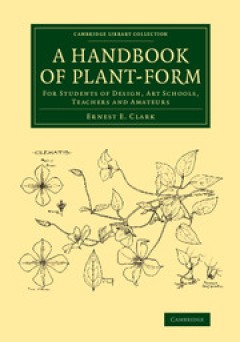
A Handbook of Plant-Form For Students of Design, Art Schools, Teachers and A…
Written and richly illustrated by the Derby-born artist Ernest Ellis Clark (1869–1932), this guide was originally published in 1904 to demonstrate the decorative possibilities of certain plants, mainly English wild flowers, to art students sitting examinations in plant drawing and design. Clark emphasises the importance of retaining a certain amount of botanical accuracy and provides examples…
- Edition
- -
- ISBN/ISSN
- 9781107262225
- Collation
- -
- Series Title
- Cambridge Library Collection - Botany and Horticulture
- Call Number
- -
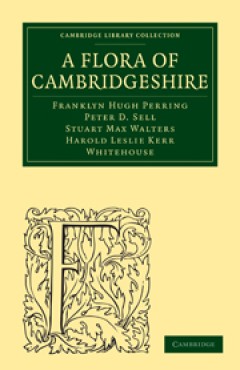
A Flora of Cambridgeshire
This flora, published in 1964, was the first comprehensive account of Cambridgeshire's plants since Babington's of 1860. Based on records to the end of 1962, it details 1509 species. These comprise 27 pteridophytes, 3 gymnosperms, 1223 angiosperms and 256 bryophytes. The following information is provided for each of the species: scientific name; well-known vernacular name, if any; first known r…
- Edition
- -
- ISBN/ISSN
- 9780511693427
- Collation
- -
- Series Title
- Cambridge Library Collection - Cambridge
- Call Number
- -
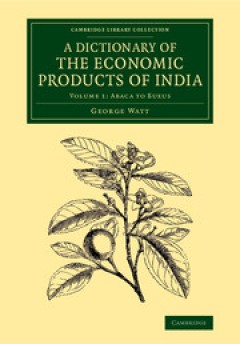
A Dictionary of the Economic Products of India
A Scottish doctor and botanist, George Watt (1851–1930) had studied the flora of India for more than a decade before he took on the task of compiling this monumental work. Assisted by numerous contributors, he set about organising vast amounts of information on India's commercial plants and produce, including scientific and vernacular names, properties, domestic and medical uses, trade statis…
- Edition
- -
- ISBN/ISSN
- 9781107239210
- Collation
- -
- Series Title
- Cambridge Library Collection - Botany and Horticulture
- Call Number
- -
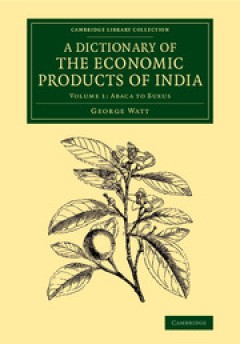
A Dictionary of the Economic Products of India
A Scottish doctor and botanist, George Watt (1851–1930) had studied the flora of India for more than a decade before he took on the task of compiling this monumental work. Assisted by numerous contributors, he set about organising vast amounts of information on India's commercial plants and produce, including scientific and vernacular names, properties, domestic and medical uses, trade statis…
- Edition
- -
- ISBN/ISSN
- 9781107239159
- Collation
- -
- Series Title
- Cambridge Library Collection - Botany and Horticulture
- Call Number
- -
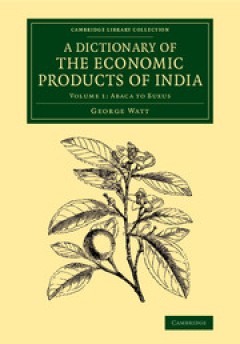
A Dictionary of the Economic Products of India
A Scottish doctor and botanist, George Watt (1851–1930) had studied the flora of India for more than a decade before he took on the task of compiling this monumental work. Assisted by numerous contributors, he set about organising vast amounts of information on India's commercial plants and produce, including scientific and vernacular names, properties, domestic and medical uses, trade statis…
- Edition
- -
- ISBN/ISSN
- 9781107239197
- Collation
- -
- Series Title
- Cambridge Library Collection - Botany and Horticulture
- Call Number
- -
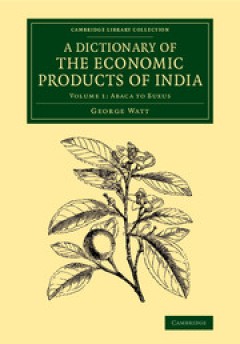
A Dictionary of the Economic Products of India
A Scottish doctor and botanist, George Watt (1851–1930) had studied the flora of India for more than a decade before he took on the task of compiling this monumental work. Assisted by numerous contributors, he set about organising vast amounts of information on India's commercial plants and produce, including scientific and vernacular names, properties, domestic and medical uses, trade statis…
- Edition
- -
- ISBN/ISSN
- 9781107239173
- Collation
- -
- Series Title
- Cambridge Library Collection - Botany and Horticulture
- Call Number
- -
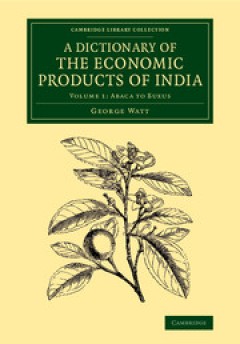
A Dictionary of the Economic Products of India
A Scottish doctor and botanist, George Watt (1851–1930) had studied the flora of India for more than a decade before he took on the task of compiling this monumental work. Assisted by numerous contributors, he set about organising vast amounts of information on India's commercial plants and produce, including scientific and vernacular names, properties, domestic and medical uses, trade statis…
- Edition
- -
- ISBN/ISSN
- 9781107239142
- Collation
- -
- Series Title
- Cambridge Library Collection - Botany and Horticulture
- Call Number
- -
 Computer Science, Information & General Works
Computer Science, Information & General Works  Philosophy & Psychology
Philosophy & Psychology  Religion
Religion  Social Sciences
Social Sciences  Language
Language  Pure Science
Pure Science  Applied Sciences
Applied Sciences  Art & Recreation
Art & Recreation  Literature
Literature  History & Geography
History & Geography